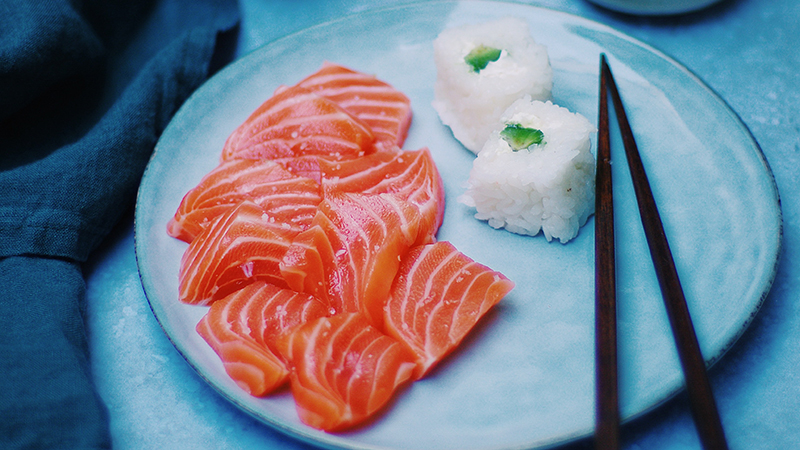
Lockdowns took Japanese food away from me, as restaurant tabletops collected dust and I relied on nostalgia to satisfy certain cravings. In the case of my beloved sashimi, I needed to DIM – do it myself. Even though an itamae (sashimi chef) perfects his technique over 20 to 30 years, I was determined to give it a go—and my life was forever changed.
1. The Shopping
“Sashimi-grade” is used by sellers to communicate the safe preparation of the fish; it isn’t conferred by a governing body. This usually indicates it is the freshest fish, with minimal risk of contamination, and has been flash-frozen to meet health guidelines. The skin should be moist and shiny, the flesh firm, with no fishy smell. My big concern was quality and safety, and avoiding food poisoning, but I realized this is nothing to really worry about. Sashimi dates back to 500 BCE China, so eating raw fish is nothing new.
2. The Knife
The next important thing is a razor-sharp knife, stainless-steel with a plain blade. Sanitize your knife and cutting board before and after each use.
Mystery Taste
Shiso is an herb that belongs to the mint family and has a bittersweet flavour, with a scent that will remind you of a meadow after a rainfall. It’s used to garnish fish, rice, tempura, soup and vegetables in Japanese cooking.
3. The Ingredients
Sashimi-grade salmon
Sashimi-grade tuna
Shiso leaves
Daikon radish
Wasabi
Soy sauce
Plan for an average of 6 to 8 ounces of fish per person. Keep the fish below 40°F until serving.
4. The Cut
Slice the fish in a single downward pulling motion with a smooth and clean cut. A hira-zukuri cut is 2 inches long, 3/8 inches thick, but I just eyeball it.
5. The Garnish
Add wasabi and shiso leaves—which inhibit bacteria—and some shredded daikon radish, called tsuma, for a palate cleanse. Place your slices so they overlap in a row and serve immediately.


